 W
WThe siege of Boonesborough took place in September 1778 during the American Revolutionary War. The attack on the Kentucky settlement of Boonesborough was led by Chief Blackfish, a Shawnee leader allied to the British. Months before the battle, Blackfish had captured and adopted Daniel Boone, the founder of Boonesborough. Boone escaped the Shawnees in time to lead the defense of the settlement. Blackfish's siege was unsuccessful and was lifted after ten days. Boone was then court-martialed by fellow officers who suspected him of having British sympathies. Boone was acquitted, but he soon moved away from Boonesborough.
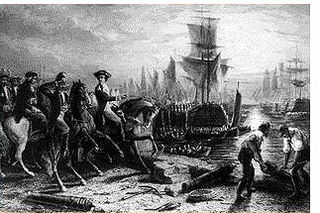 W
WThe siege of Boston was the opening phase of the American Revolutionary War. New England militiamen prevented the movement by land of the British Army, which was garrisoned in what was then the peninsular city of Boston, Massachusetts Bay. Both sides had to deal with resource, supply, and personnel issues over the course of the siege. British resupply and reinforcement was limited to sea access, which was impeded by American vessels. The British abandoned Boston after eleven months and transferred their troops and equipment to Nova Scotia.
 W
WBryan Station was an early fortified settlement in Lexington, Kentucky. It was located on present-day Bryan Station Road, about three miles (5 km) north of New Circle Road, on the southern bank of Elkhorn Creek near Briar Hill Road. The settlement was established circa 1775–76 by brothers Morgan, James, William, and Joseph Bryan, and brother-in-law William Grant, all from Yadkin River Valley, Rowan County, North Carolina, to which all the survivors returned in August 1780. The occupants of this parallelogram of some forty log cabins withstood several American Indian attacks.
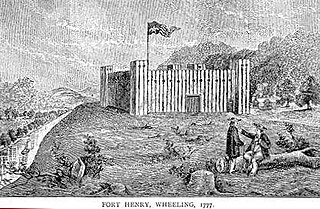 W
WThe siege of Fort Henry was an attack on American militiamen during the American Revolutionary War near the Virginia outpost known as Fort Henry by a mixed band of Indians in September 1777. The fort, named for Virginia Governor Patrick Henry, was at first defended by only a small number of militia, as rumors of the Indian attack had moved faster than the Indians, and a number of militia companies had left the fort. The American settlers were successful in repulsing the Indian attack.
 W
WThe second siege of Fort Henry took place from September 11 to 13, 1782, during the American Revolutionary War. A force of about 300 Wyandot, Shawnee, Seneca and Delaware Indians laid siege to Fort Henry, an American outpost at what is now Wheeling, West Virginia, accompanied by a force of 50 British officers and Loyalists from Butler's Rangers. The siege is commonly known as "The Last Battle of the Revolutionary War," despite subsequent skirmishes between Patriots and Loyalists involving the loss of life taking place in New Jersey later in 1782. However, these were unorganized outbreaks of fighting between patrons with opposing sentiments rather than engagements between belligerents.
 W
WFort Laurens was an American Revolutionary War fort on a northern tributary of the Muskingum River in what would become Northeast Ohio, United States. The fort's location is in the present-day town of Bolivar, Ohio, along the Ohio and Erie Canal Towpath Trail.
 W
WFort Laurens was an American Revolutionary War fort on a northern tributary of the Muskingum River in what would become Northeast Ohio, United States. The fort's location is in the present-day town of Bolivar, Ohio, along the Ohio and Erie Canal Towpath Trail.
 W
WThe siege of Fort Mifflin or siege of Mud Island Fort from September 26 to November 16, 1777 saw British land batteries commanded by Captain John Montresor and a British naval squadron under Vice Admiral Lord Richard Howe attempt to capture an American fort in the Delaware River commanded by Lieutenant Colonel Samuel Smith. The operation finally succeeded when the wounded Smith's successor, Major Simeon Thayer, evacuated the fort on the night of November 15 and the British occupied the place the following morning. Owing to a shift of the river, Fort Mifflin is currently located on the north bank of the Delaware adjacent to Philadelphia International Airport.
 W
WThe Siege of Fort Motte was a military operation during the American Revolutionary War. A force of Patriots led by General Francis "Swamp Fox" Marion and Lt. Colonel "Light Horse" Harry Lee set out to capture the British post at Fort Motte, the informal name of a plantation mansion fortified by the British for use as a depot because of its strategic location at the confluence of the Congaree and Wateree rivers. The British garrisoned roughly 175 British soldiers under Lt. Daniel McPherson at the fort.
 W
WThe siege of Fort St. Jean was conducted by American Brigadier General Richard Montgomery on the town and fort of Saint-Jean in the British province of Quebec during the American Revolutionary War. The siege lasted from September 17 to November 3, 1775.
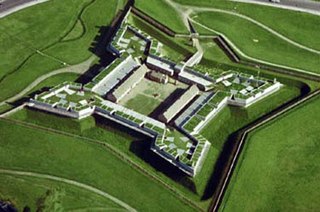 W
WThe siege of Fort Stanwix in 1777 began on August 2 and ended August 22. Fort Stanwix, in the western part of the Mohawk River Valley, was then the primary defense point for the Continental Army against British and Indian forces aligned against them in the American Revolutionary War. The fort was occupied by Continental Army forces from New York and Massachusetts under the command of Colonel Peter Gansevoort. The besieging force was composed of British regulars, American Loyalists, Hessian soldiers from Hesse-Hanau, and Indians, under the command of British Brigadier General Barry St. Leger and the Iroquois leader Joseph Brant. St. Leger's expedition was a diversion in support of General John Burgoyne's campaign to gain control of the Hudson River Valley to the east.
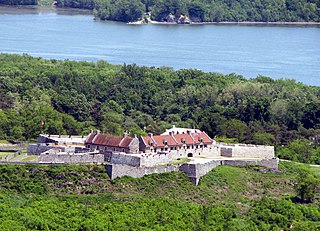 W
WThe 1777 Siege of Fort Ticonderoga occurred between the 2nd and 6 July 1777 at Fort Ticonderoga, near the southern end of Lake Champlain in the state of New York. Lieutenant General John Burgoyne's 8,000-man army occupied high ground above the fort, and nearly surrounded the defenses. These movements precipitated the occupying Continental Army, an under-strength force of 3,000 under the command of General Arthur St. Clair, to withdraw from Ticonderoga and the surrounding defenses. Some gunfire was exchanged, and there were some casualties, but there was no formal siege and no pitched battle. Burgoyne's army occupied Fort Ticonderoga and Mount Independence, the extensive fortifications on the Vermont side of the lake, without opposition on 6 July. Advance units pursued the retreating Americans.
 W
WThe siege of Fort Vincennes was a Revolutionary War frontier battle fought in present-day Vincennes, Indiana won by a militia led by American commander George Rogers Clark over a British garrison led by Lieutenant Governor Henry Hamilton. Roughly half of Clark's militia were Canadien volunteers sympathetic to the American cause. After a daring wintertime march, the small American force was able to force the British to surrender the fort and in a larger frame the Illinois territory.
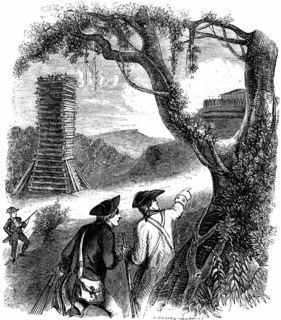 W
WThe Siege of Fort Watson was an American Revolutionary War confrontation in South Carolina that began on April 15, 1781 and lasted until April 23, 1781. Continental Army forces under Henry "Light Horse Harry" Lee and South Carolina militia under Francis Marion besieged Fort Watson, a fortified British outpost that formed part of the communication and supply chain between Charleston and other British outposts further inland.
 W
WThe Great Siege of Gibraltar was an unsuccessful attempt by Spain and France to capture Gibraltar from the British during the War of the American Revolution. The American war had ended with the British defeat at Yorktown in October 1781, but the Bourbon defeat in their great final assault on Gibraltar would not come until September 1782. The siege was suspended in February 1783 at the beginning of peace talks with the British.
 W
WThe Siege of Ninety Six was a siege in western South Carolina late in the American Revolutionary War. From May 22 to June 18, 1781, Continental Army Major General Nathanael Greene led 1,000 troops in a siege against the 550 Loyalists in the fortified village of Ninety Six, South Carolina. The 28-day siege centered on an earthen fortification known as Star Fort. Despite having more troops, Greene was unsuccessful in taking the town, and was forced to lift the siege when Lord Rawdon approached from Charleston with British troops.
 W
WThe siege of Savage's Old Fields was an encounter between Patriot and Loyalist forces in the back country town of Ninety Six, South Carolina, early in the American Revolutionary War. It was the first major conflict in South Carolina in the war, having been preceded by bloodless seizures of several military fortifications in the province. Patriot forces under the command of Major Andrew Williamson had been dispatched to the area to recover a shipment of gunpowder and ammunition intended for the Cherokees that had been seized by Loyalists. Williamson's force, numbering over 500, established a stockaded fort near Ninety Six, where it was surrounded by some 1,900 Loyalists.